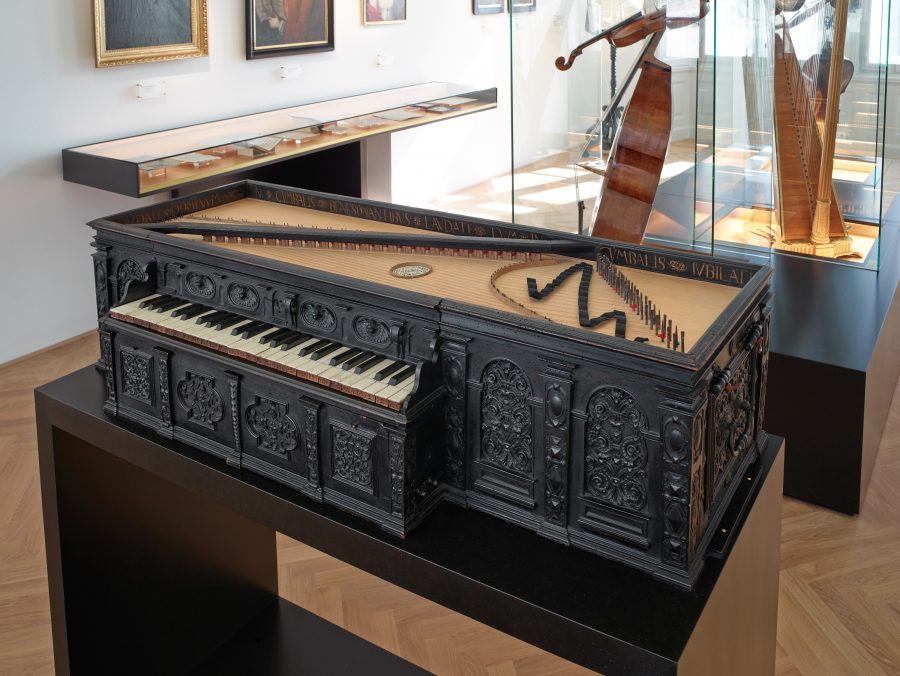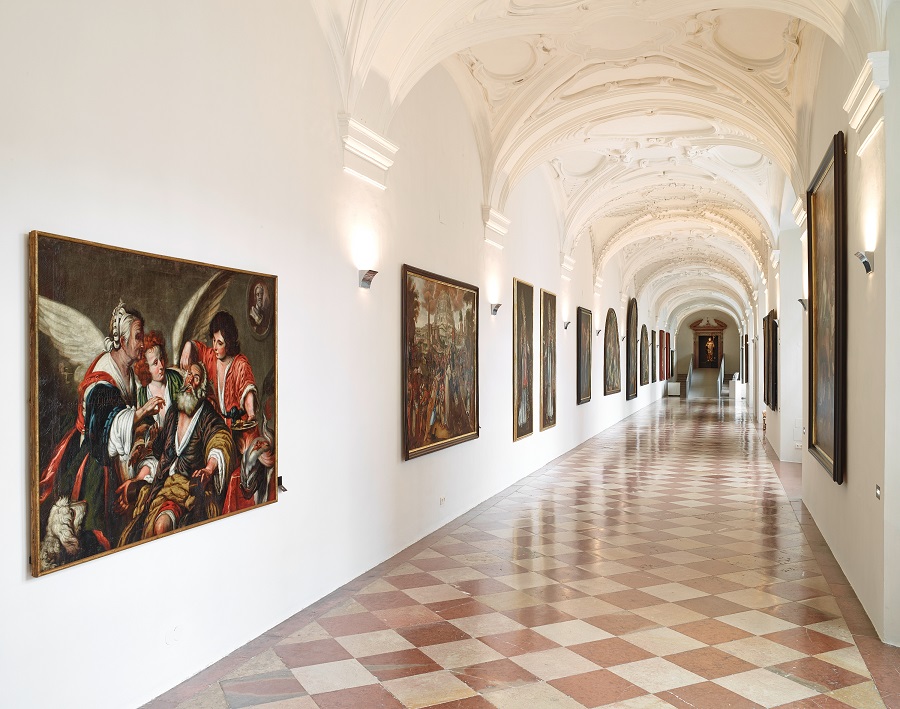

The valuable art treasures collected by the Archabbey of St. Peter and exhibited in the Long Gallery and the Museum depict the history of the oldest monastery in the German-language region.
The religious lifestyle of a monastery and the celebration of the sacred liturgy required certain implements (vasa sacra) and textiles (paraments) which were kept in the sacristy and later in the treasure chamber. The most important collections of the Archabbey include not only the church treasure, but also a collection of paintings, large holdings of prints, coins, arts and crafts, minerals, musical instruments and many other artefacts.
St. Peter’s Museum, located in the so-called “Wallis Tract” of the old archiepiscopal Residence (the former Court Arcade Building), presents a selection of the most beautiful objects: for example the so-called “St. Rupert’s Pastoral Staff” (an abbot’s crosier from the 11th or 12th century), a chalice from the 12th century and an especially well-preserved chasuble cross from the 15th century. Then there are the objects that form the pride of the collection acquired by Abbot Rupert V. Keutzl around 1480: a mitre richly set with precious stones, an equally artfully decorated pastoral staff and a matching clasp for a liturgical vestment.

Music room Museum of St. Peter’s Abbey, Claviorganum
St. Peter’s and Music
The division “St. Peter’s and Music” traces the fruitful connections between the Archabbey and Johann Michael Haydn and Wolfgang Amadeus Mozart, showing, among other objects, a “claviorganum” richly decorated with carvings: it is a masterwork of craftsmanship, a kind of organ first acquired by Archbishop Wolf Dietrich.
History of St. Peter’s
The third part of the permanent exhibition recounts the history of St. Peter’s, all the way to monastic life today. Brought to life in film segments, the Archabbot and members of the convent talk about their life in the abbey: about their daily schedule, their work, their communication with God.

One of the earliest gallery buildings north of the Alps
Long Gallery
The former painting gallery of the Prince-Archbishops, the Long Gallery, built between 1657 and 1661 under Guidobald Count Thun and transferred to the Archabbey of St. Peter’s in 1819, shows large-scale paintings from the Abbey’s collections, which were intended mainly for religious contemplation and created for various rooms of the Monastery.